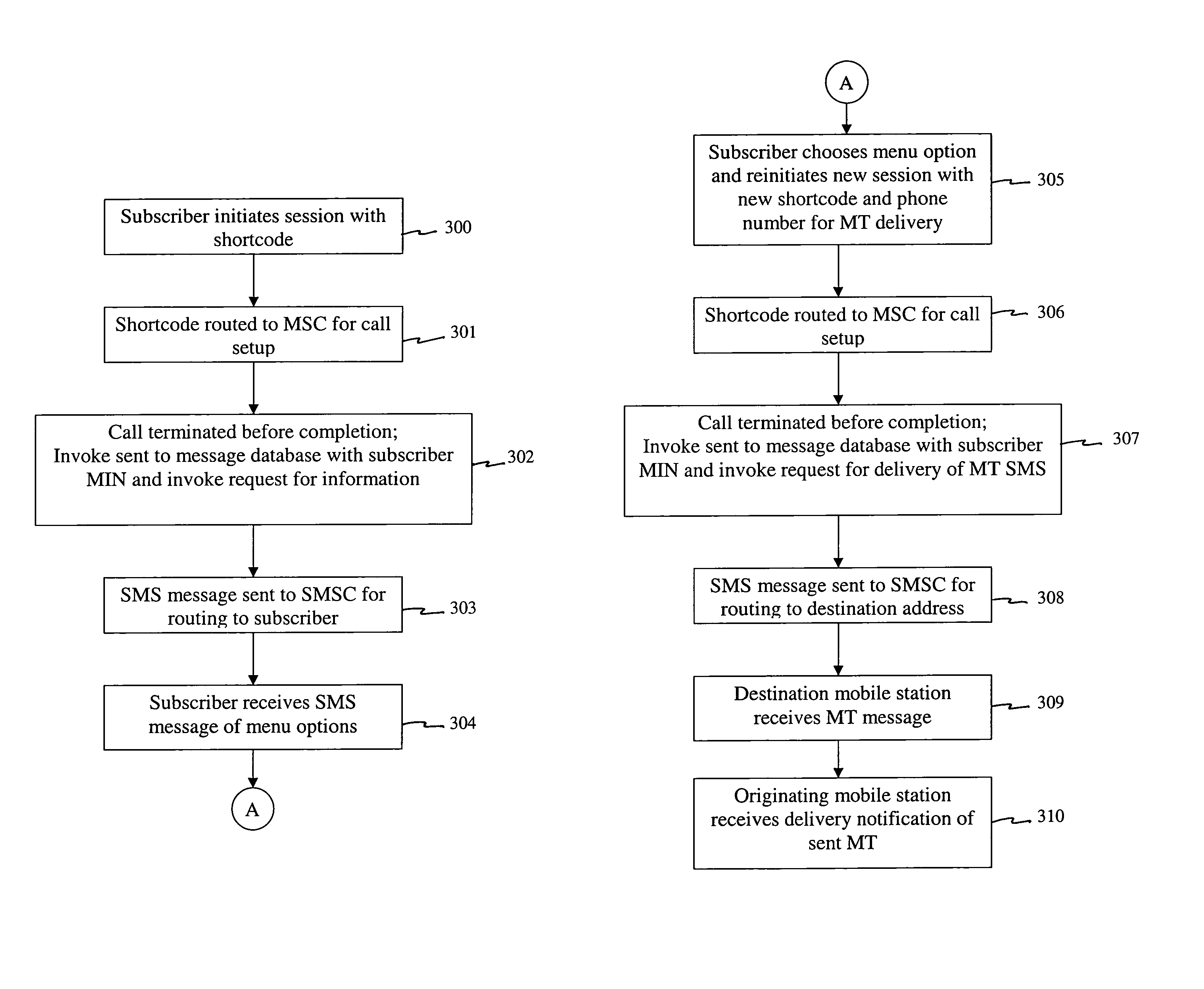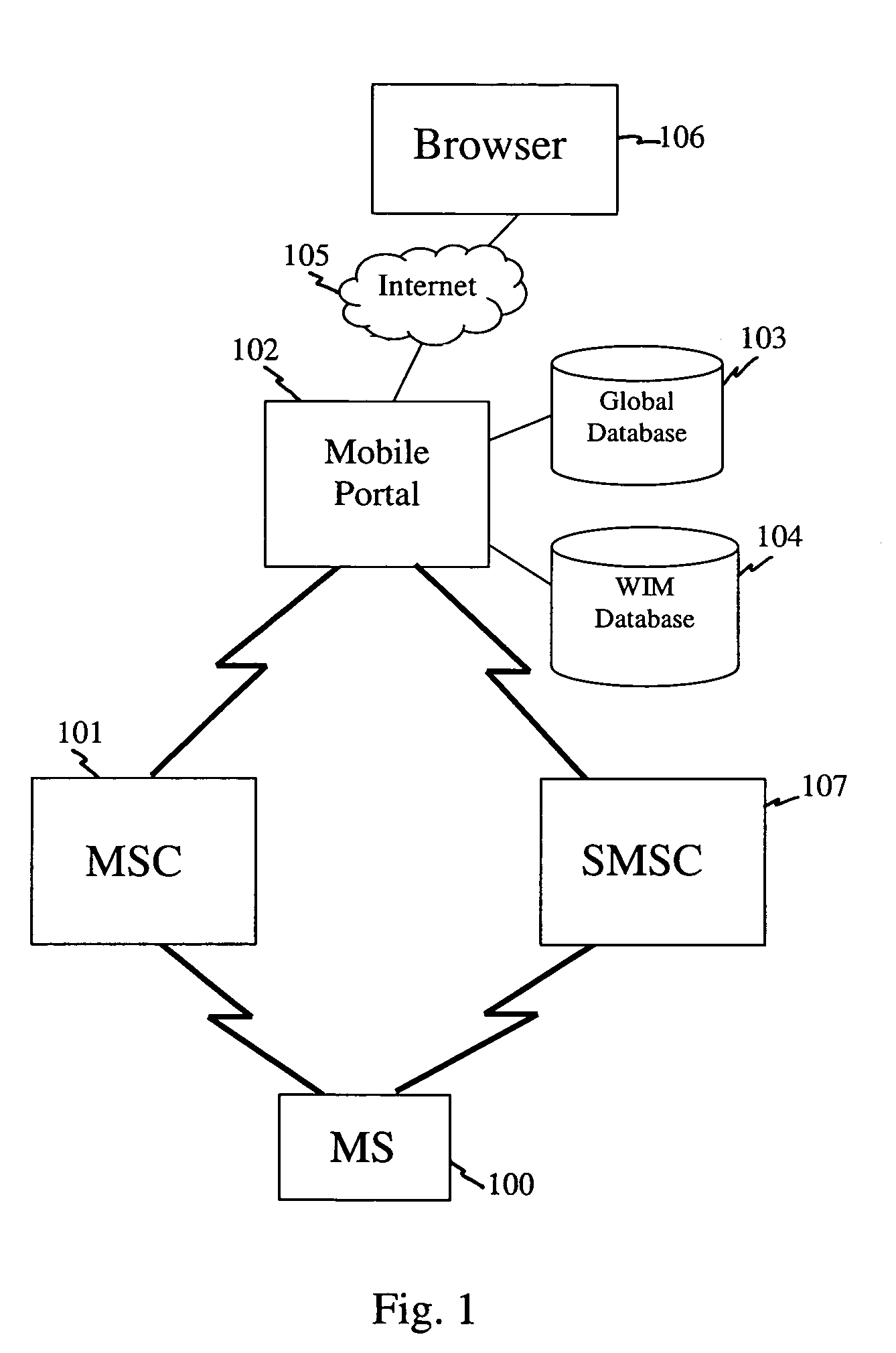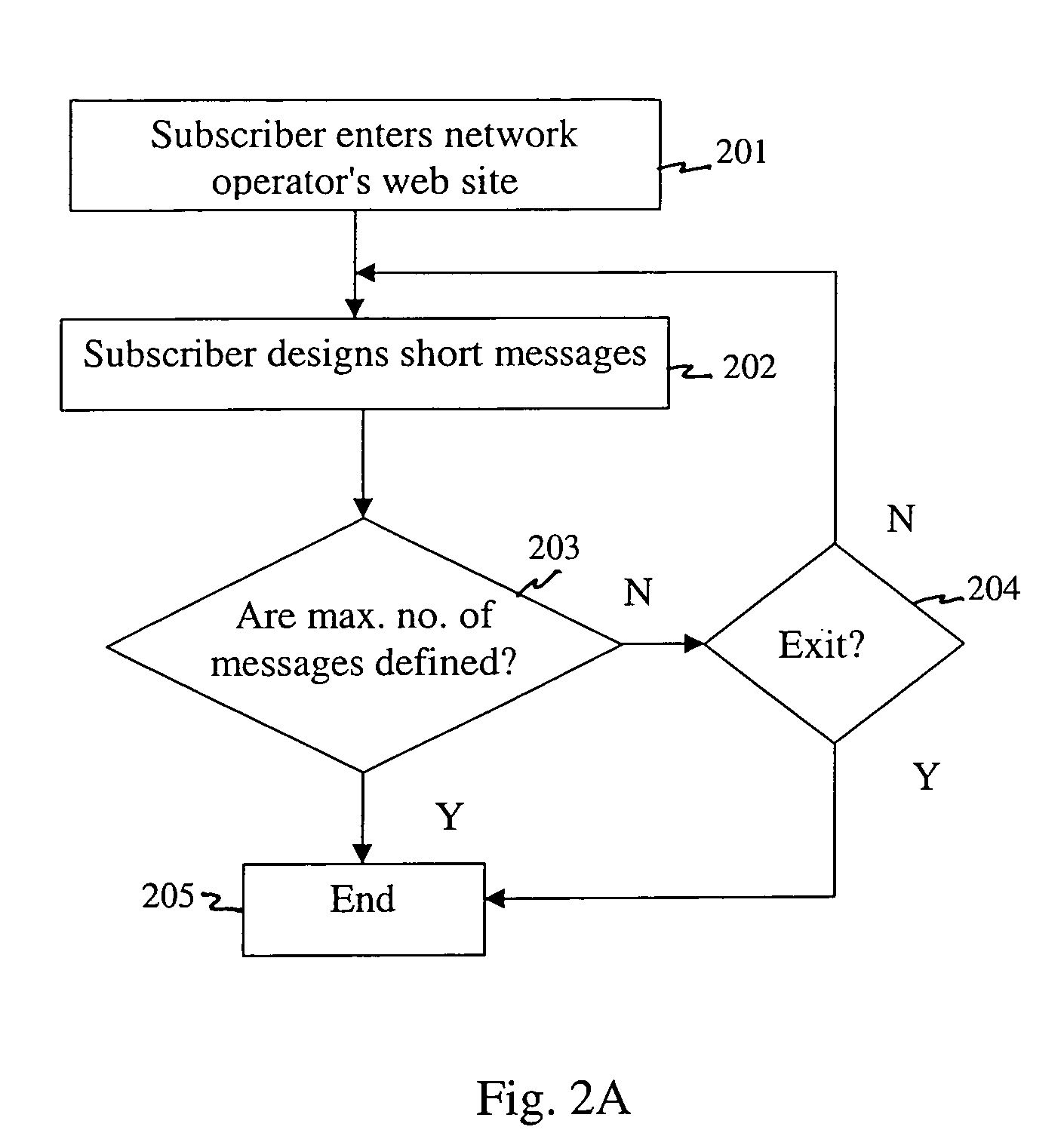Wireless initiated messaging
a technology of initiating messages and wireless communication, applied in the field of initiating messages, can solve the problems of not allowing users to initiate messages from their mobile stations, limited to receiving mt messages, and users with mobile stations that are not mo-enabled cannot participate in mo messaging, and achieve the effect of generating additional revenu
- Summary
- Abstract
- Description
- Claims
- Application Information
AI Technical Summary
Benefits of technology
Problems solved by technology
Method used
Image
Examples
Embodiment Construction
[0052]A preferred embodiment of a messaging system and method, according to the invention is described below in detail with reference to the accompanying drawings.
[0053]Shown in FIG. 1 is a basic MO messaging architecture modified to include message initiation according the present invention. Referring to FIG. 1, a user uses a mobile station (MS) 100, or handset, to place wireless telephone calls and to transmit and receive text messages. The mobile station (MS) 100 connects via a wireless connection to a Mobile Switching Center (MSC) 101. The MSC operates to switch a voice signal to connect with another users telephone equipment. The MSC can also route a signal to a mobile portal 102. Associated with the mobile portal 102 can be a global predefined-message database 103 containing predefined messages globally available to all subscribers in the network, as discussed above in the Background section. The mobile portal 102 according to the present invention is also connected to a wirel...
PUM
 Login to View More
Login to View More Abstract
Description
Claims
Application Information
 Login to View More
Login to View More - R&D
- Intellectual Property
- Life Sciences
- Materials
- Tech Scout
- Unparalleled Data Quality
- Higher Quality Content
- 60% Fewer Hallucinations
Browse by: Latest US Patents, China's latest patents, Technical Efficacy Thesaurus, Application Domain, Technology Topic, Popular Technical Reports.
© 2025 PatSnap. All rights reserved.Legal|Privacy policy|Modern Slavery Act Transparency Statement|Sitemap|About US| Contact US: help@patsnap.com



